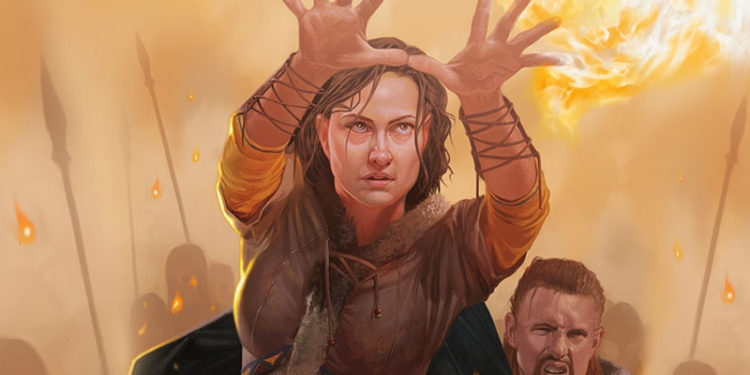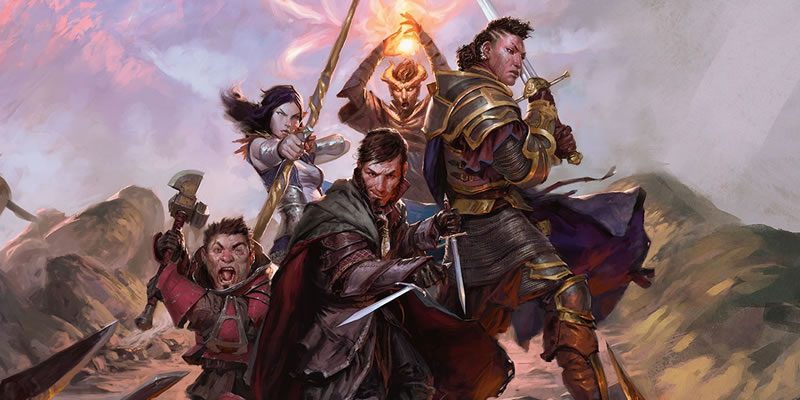Unearthed Arcana: Wizard Revisited Breakdown

After last week’s release of the third mystic iteration, and given that the week before that had one wizard subclass shoved into an article mostly on warlocks, I thought Unearthed Arcana might give this week a miss. I was, of course, mistaken! Today we have two new wizard traditions: Theurgy (a reprint) and the new War Magic tradition, which I can only assume is here for Cormyrean War Wizards. (It’s surprising that they released Purple Dragon Knights without putting War Wizards in the same book.)
Theurgy
The theme of theurgy is straightforward some gods of magic grant their power to wizards, as an alternative or complement to Arcana clerics. Considering how thin the thematic walls around “wizards can’t use healing magic” are in 5e, I’m totally fine with Theurges being the ones that stop messing around and just let wizards heal if they want. As a reminder, we saw the Theurgy in the Faithful UA document. Nothing has materially changed, so I’ll take this quickly:
- You pick a domain.
- Your two free new spells when you gain a level of wizard can go to learning your domain spells. If you know all of your domain spells, then they can go to learning other cleric spells. This creates some bookkeeping weirdness. It’s not the end of the world, but as soon as you pick up a new level of spells, you should try to add them to your spellbook through copying from another book, if at all possible.
- The Life domain is such a winner here, because cure wounds and bless are the big game-changers and they’re right there in the domain. Revivify and raise dead are also huge. Sure, now you have party members expecting you to, like, use those spells.
- You Channel Divinity with the same frequency as a cleric.
- You don’t Turn Undead, but you do get the rest of your domain’s Channel Divinity options, as well as Divine Arcana – a bonus action channeling that boosts your spell attack or save DC. Fine, useful, whatever.
- You gain the domain’s 1st level features (other than weapon and armor proficiencies) at 6th level.
- You gain the domain’s 6th level features at 10th level.
- You gain the domain’s 17th level features at 14th level. This occasionally has head-scratching externalities, but that’s life I guess. The Arcana domain’s 17th-level feature comes to mind.
Overall, this is fine. On paper, it’s not exciting because almost every feature is a pointer to another class or subclass feature. If you follow through and see what that means you could combine with wizard, some interesting things emerge – the Light Domain’s Corona of Light, the Tempest Domain’s Thunderbolt Strike, and so on. Of my own published cleric domains, Blood is a bad fit in the same way that War is (heavy reliance on weapon and armor proficiencies), Exorcism is probably stellar, and Spirit should be excellent. Those are all fairly well in keeping with Theurgy themes, though, so that comes together tidily.
The one other thing I want to say here is that the Wikipedia page on Theurgy is a great basis for a setting cosmology, particularly one that wants to blur or completely erase the lines between arcane and divine magic.
War Magic
As I suggested above, the War Magic tradition fits strongly into the long-established theme of the War Wizards of Cormyr. I know there’s a prestige class for War Wizards in 3.x, and I think there was a kit or something in 2e? I’m not really sure at this point, and I’m not doing the legwork right now. Anyway, if you thought of War Magic as the blend of Abjuration and Evocation, you’d pretty much have it, as the flavor text spells not. Um, hot tip, these folks do not get a bunch of non-combat features. It’s interesting that they’re not based heavily on the 3.5 warmage class, but I doubt many people are mourning the absence of said class in 5e.
- Arcane Deflection is a reaction that boosts AC by 2 and Concentration saving throws by 4 against the triggering attack or save. It has no usage limit, so that’s really good! It does have a vicious drawback, though: you can’t cast anything but cantrips until the end of your next turn. So sure, you could just keep using Arcane Deflection, but I hope you’re ready for cantrip spam as a career choice. (Remember, please, that you are not a warlock.)
- Tactical Wit lets you add your Intelligence modifier to Initiative rolls. This is probably a much bigger deal than it superficially seems like, because that opening round is such an ideal time for your biggest, burniest explodey zap booms – “evocation spells,” as the other wizards call them – before your front line and the enemy front line have even collided.
- Power Surge is all about those big evocations. In a callback to some 4e build features that were much more difficult to resolve in play, your AoEs do more damage when they’re affecting two or more creatures. Here, it’s clean to resolve – when you force two or more creatures to roll saving throws against one of your spells, the spell’s damage increases. This is a 1/short rest feature. It wouldn’t do anything if there were a fixed-damage effect that still had a saving throw, and it does favor, say, a 6d8 effect over an 8d6 effect. There are a tiny number of cantrips that it could modify, but the core point of this thing is to make the big boom boom bigger. Solid signature feature.
- Durable Magic improves your defenses while you’re maintaining concentration. That’s a great idea, but I’m much less pleased with its flat +2 to AC and saves – that looks to me like something that PCs will often forget and have to correct after the action has moved on. 5e went way out of its way to avoid situational modifiers; this is not a great place to violate that.
- Deflecting Shroud rewards you further for using your Arcane Deflection reaction – enemies within 10 feet (really “creatures of your choice,” but forgive me a slight elision) take half your wizard level in damage when you use that reaction.
- It’s weird that the tradition pushes you toward relying mainly on cantrips and one concentration spell, but I think the point is that you have a panic-button feature that can get you through a bad spot. In most subclasses, you’d want to aggressively use something like this, but here it’s inadvisable – use it sparingly, to keep your next round’s options open. I think the key point here is to give the wizard more security to approach to midrange or melee range, for those big-but-risky cone, square, or point-blank AoEs, without as much risk of losing their crowd-control or buffing Concentration effects.
The things that War Magic grants are potent in a narrow window, rather than broad and versatile. They’re useful features, but if you accept my argument that these defenses are here so that the wizard can take riskier positions for shorter-range AoEs, then it’s a lot of work just to replace Sculpt Spells. Power Surge is still boss at 6th, but 4 levels later, the Evoker gets Empowered Evocation. Power Surge adds two dice of damage once per short rest, so at best we’re talking 2d12 (an average of 13). Sure, Power Surge works with some number of AoE non-evocation spells. Empowered Evocation, on the other hand, adds your Intelligence modifier (let’s call it 5) to every wizard evocation you cast. So just ask yourself if you cast three evocations or more between short rests.
The last big advantage that the War Mage has is some help against concentration interruption, particularly important if the DM gives NPCs the Mage Slayer feat. For that… yeah, that’s still pretty solid. (The initiative bonus is good, but not dominant enough to worry about.) Those defensive benefits do protect you from ranged attackers, skirmishers, and the collapse of your front line in ways that the Evoker has to spend a ton of time and spells to match. Ask yourself how often you’re having those problems and whether you want most of your subclass features to be how you solve them.
I would like to see another run at War Magic that expands its capabilities into something more than its core combat loop. I’m not saying they shouldn’t be about warfare! Just that so much of that concept has already been nuked and paved by the Evoker that they need to say something new about how to carry out boom zap murder. (For what it’s worth, writing this has given me a new appreciation for the Evoker.)


